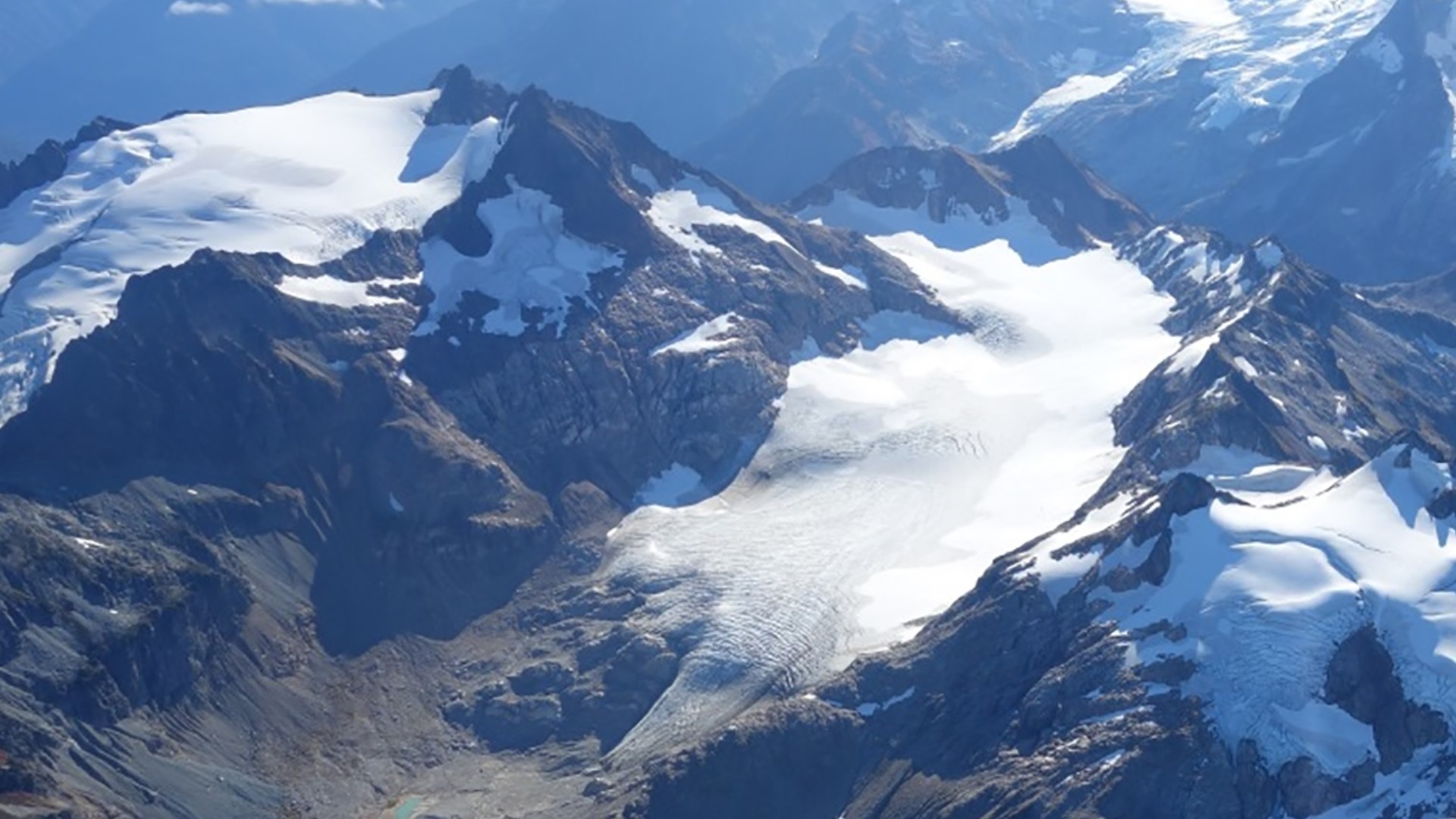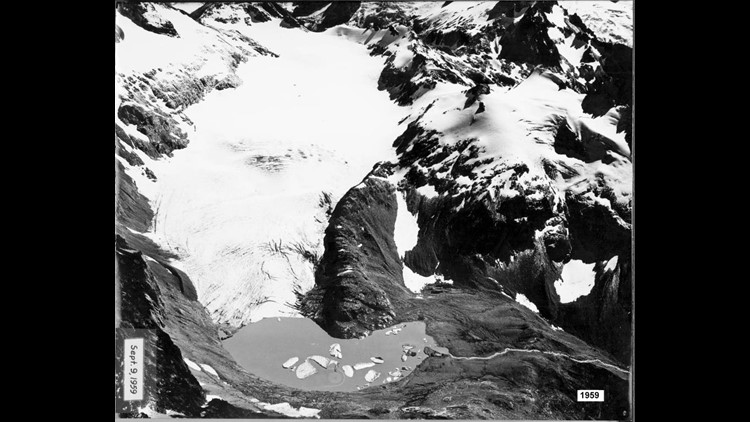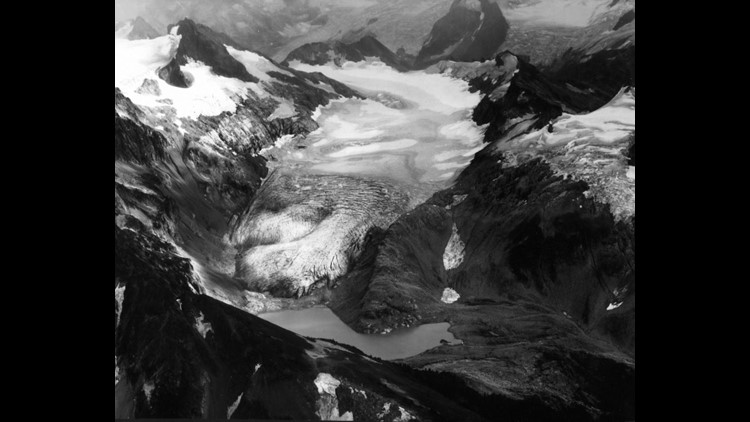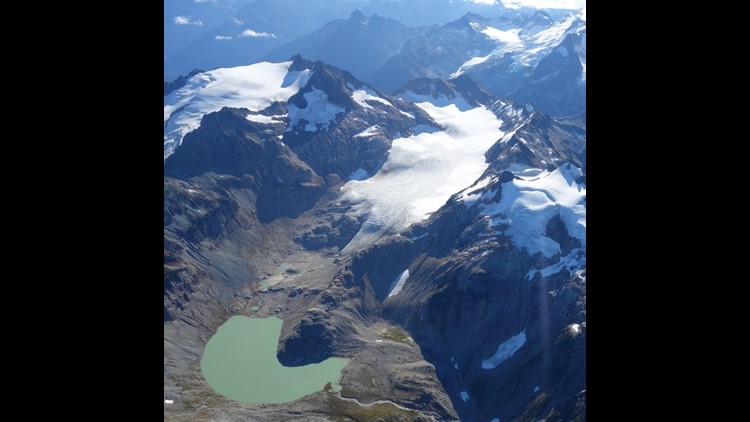NORTH CASCADE, Wash. — Washington state’s glaciers are not only shrinking but melting away entirely.
The National Park Service has studied glaciers for more than a century in Mount Rainier, Olympic and North Cascades national parks. The Olympics and North Cascades have lost more than half their ice since 1900. Rainier has lost 3%.
Yet the amount of loss since the late 1970s has accelerated, based on National Park Service surveys of these mountain glaciers.
The loss at Mount Rainier is less alarming, largely because at 14,411 feet, much of its glaciers are at higher and colder altitudes. But according to NPS glaciologist Mike Larabee, glaciers that do not extend to the top of the mountain have significantly more loss.
One glacier that is classified as a benchmark by the U.S. Geological Survey (USGS) is the South Cascade Glacier, which ironically is located in the northern Cascade mountains but outside of the national park. Its meltwater flows into the Skagit River near Marblemount. It’s called a benchmark because what happens on it can be inferred to other glaciers in the state.
The USGS has five benchmark glaciers. Three are in Alaska and a fourth is Sperry Glacier in Glacier National Park in Montana, which Stevens points out is also quickly losing mass.
South Cascade Glacier has been studied by USGS in detail since the late 1950s. Glaciologist Max Stevens says the glacier has shrunk back by about a half-mile since then.
But glaciers are not only measured by how long they are and how much area they cover, but how thick they are - their mass - which is also shrinking.
“We go out every spring and measure how much snow fell at several sites on the glacier to get a representative sample,” Stevens said.
They also go out back in the late summer or early fall, drill exploratory holes, weigh ice samples, and establish and monitor localized weather stations on the ice.
“South Cascade Glacier is a little bit more than twice the size of Green Lake [Glacier] and it’s about 650 feet thick. That’s about the height of the Space Needle, and each year we’re taking about 2 feet off the top of that,” Stevens said.
That 2 feet is an average. Less ice is lost at the upper elevations of glaciers and more at the lower portions where more melting occurs.
South Cascade Glacier over the years
Glaciers are not fixed in place. They are rivers of ice that flow. When a glacier gains as much snow at the top as the amount of ice that will melt at the bottom, it’s considered mass balance. During colder periods glaciers have gained mass. But that hasn’t happened recently.
The South Cascade Glacier has seen a "net loss of mass" over the past decade, according to Stevens.
"Glaciers are a big part of water resources in the northwest,” he said, and that’s the mission the USGS has in telling farmers, electrical utilities, fish biologists and others about what they can expect. After all, glacial melt is a big part of the ecosystem in many Washington rivers. “As far as climate change goes, I hope that people who are making decisions around climate change are able to use our data to inform their decisions.”







